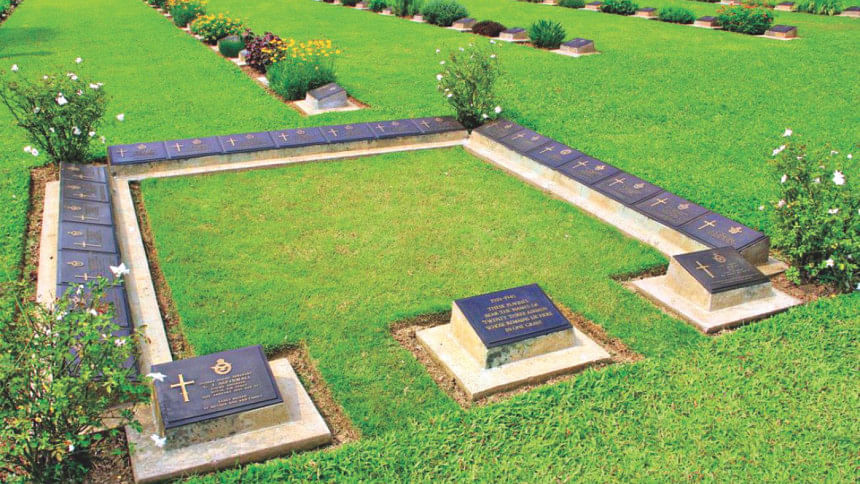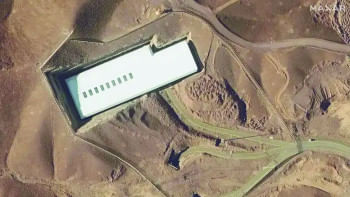White Headstones and Black Bodies

Tucked away in the hills of Chittagong, and between the overgrown temples of Maynamati, are white stones bearing the names of the African men buried beneath them. We refer to their graves as British graves.
They came from Nigeria, the former Rhodesia, and still many more others from ambiguous 'West Africa' regiments, to finally lie beside Indians, Australians, New Zealanders and Canadians. And all these men share their rows of white headstones with the people they came to die for—the British. The cemeteries are their monuments. There are others like them across the world—wherever the British had gotten people killed.
The Imperial War Graves Commission was a unique experiment. The dead of World War One were to be buried under uniform white headstones, in straight rows, with no preference for rank or race, with the same symbols and style at every cemetery across the world. From Ypres to Basra, the dead would be buried where they fell—not repatriated, not returned to their families—their bodies in shrines, belonging to the British Empire they had all supposedly fought to protect. Churchill was confident that long after the Empire and its institutions crumbled, the cemeteries would remain as a reminder of its power. He has been proven right—the empire may be gone, and the whole show with the memorials and graves rebranded as the Commonwealth War Graves Commission, but the bodies are still there.
Or rather, they should be there. In actual fact, a lot of the memorials are monuments to the missing, the bodies deemed impossible to recover. Sometimes burials were inappropriate—such as with the El Alamein Cremation Memorial. And sometimes, burials were simply considered not worthwhile. Despite the ethos of equality of the War Graves Commission, there is a racial hierarchy to the memorials. On the fields of Europe, the Indian forces of World War One have been commemorated—at the Indian Forces Memorial in Neuve-Chapele, on the wall of the Menin Gate—but others have not. The Chinese Labour Corps, the Maoris, the Africans and the Caribbean—all forbidden to fight the German, all made to serve as workers, their bodies and their suffering disregarded and forgotten. And the Indians were only really properly honoured in Europe—in Mesopotamia, where the bulk of the Indian Army was posted, less than ten percent have identified graves. The memorials to the Indians outside Europe did not list every individual by name. It was not felt that Indians would likely ever journey to Mesopotamia to pay respects. In Europe, at the very least, Europeans would see the graves, and the splendid roll of Indian names on the monuments would be effective Imperial propaganda. The memorials to Indian troops were never memorials for India—they were memorials for a Britain drunk on the myth of the loyal brown sepoy, the honourable soldier too childish to guide himself without the white man.
It is worse still in Africa, where the African dead were largely let to rest where they fell, and commemorated in mass memorials. It was not felt by the British that Africans were of sufficient civilisation to appreciate individual commemoration, or would be in the foreseeable future. White graves were maintained, and black graves were not.
So much for equality of sacrifice. Perhaps it is not a coincidence that headstones of the cemeteries, and all the paraphernalia of the Commonwealth graves across the world, are white. The deads have been whitewashed, the crime of uprooting people, sending them far across the world to die, and then dishonouring their names, all whitewashed.
Witness the Commonwealth War Graves Commission Website. Journey to the page for the Maynamati cemetery. 499 dead who served under the United Kingdom, it says. Click on that. View the names, and where they came from. Shichiyongo Shaloba, Northern Rhodesia Regiment; Tiavdzuwa Nyamikyar, Royal West African Frontier Force; Abrahim Matebule, King's African Rifles. Unlike the white, British men they are listed alongside, their names are not broken neatly into surname and first name, their parents are not listed, their birthplaces forgotten, nations and tribes unrecorded. The United Kingdom sent them to die in the hills of Burma, and gave them the brief courtesy of a stone in what would eventually become Bangladesh. A country where to be dark-skinned is a crime, and where racism against blacks is so deeply-ingrained that it doesn't even have shock value. It can't have been the death he'd wished for—even the British public protested against the policy of not bringing the dead back home, and it was their war.
The Maynamati site is more diverse than the one in Chittagong, the roster of the fallen even stranger. Witness the one man, A Lulunga, who served in Belgium's Force Publique—the sadistic paramilitary body that terrorised the Congo. One wonders about the story of this man, recruited to oppress his fellow Africans by a European government, which capitulates in the home continent but continues to resist the Nazis from Central Africa, eager to stop Hitler doing to white people what they themselves had been doing to black people. In 1943, a medical team is formed and sent to Burma to help the British, with the Force Publique as protectors. Mr. Lulunga, the state terrorist turned medical bodyguard, dies in the last year of the war, and his headstone—unnoticed, unremarked—is passed by daily by groups of Bangalis looking for something to do after having gone to the temples.
Who did he die for? Who remembers him? Briefly, you and I.
Much has been made recently of the participation of Indian troops in the battlefields of Europe, and how war films and war stories erase coloured participation. It is easy to dismiss such criticism as 'forced diversity' or 'PC culture gone mad'. I do not suggest that we should celebrate the African dead, the Chinese dead, the Maori dead… just as we should not celebrate anything to do with the World Wars, which were stupid conflicts of empire. It is a tragedy that they died in colonial wars. Yet, die they did, and they fought those wars and won them too. We should not forget the price they were made to pay. We should not be complicit in their erasure.
Next time you're in Maynamati, take a stroll through the cemetery and remember. (There are better things to do in Chittagong.)
Zoheb Mashiur is an artist and an MA candidate in International Migration at the University of Kent. Read more of this sort of thing in Disconnect: Collected Short Fiction.

 For all latest news, follow The Daily Star's Google News channel.
For all latest news, follow The Daily Star's Google News channel. 



Comments